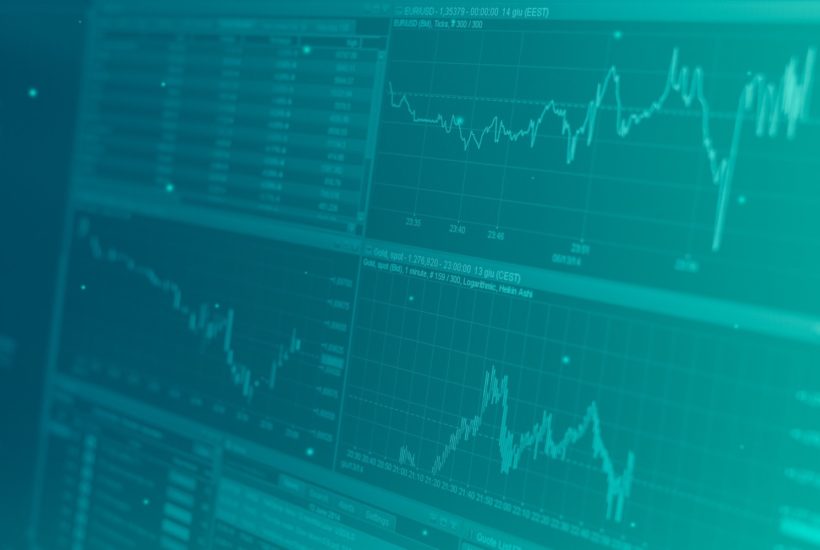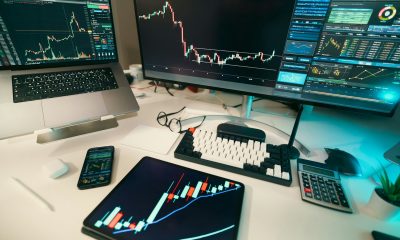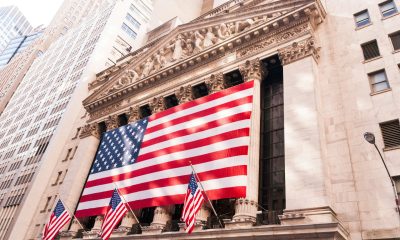Featured
Korean stock market: KOSPI smashes through 2400 barrier setting two year high
Setting record lows, the Korea Composite Stock Price Index (KOSPI) plunged below the 1500 mark in mid-march of this year as the COVID-19 crisis evolved. Once the initial panic settled, the market experienced a steady recovery and is showing no signs of stopping. Setting a two year high, the KOSPI has now broken through the 2400 line for the first time since 2018. Will it hold recent gains?

The KOSPI has broken above the 2400 mark again for the first time in two years and two months. Analysis suggests that additional capital is flowing into the market, adding additional liquidity, following the dropping of interest rates to a level close to zero following the outbreak of COVID-19.
This has seen the stock market recover and, on 11 August, the KOSPI index closed at 2418.67, up 32.29 points (1.35%) from the previous day. It was only two years and two months ago (June 15, 2018) that the KOSPI plunged below the 2400 level at market close. The KOSPI, which opened the year at 2201.21, is close to 221 points higher now, eight months later, showing an increase of 10.06% so far this year.
Whilst it is difficult to tell with certainty what the future holds for the Korean stock market, keeping up to date with all the latest global finance news is easy with our free companion app, Born2Invest.
Samsung and Hyundai star performers
Leading the charge, Samsung Electronics has risen to ₩58,200 ($49.15) and is now looking to break through the ₩60,000 ($50.67) per share barrier. Hyundai Motors has also soared, sitting at ₩179,000 ($151.17) for 7 consecutive trading days.
Securities companies are also raising eyes with their freshly adjusted forecasts. Daishin Securities raised their forecasted top from 2450 to 2480. Korea Investment & Securities have also increased their forecasts to this level, adjusting their expected high of 2370 by the end of the year up to 2480. Samsung Securities, Hana Financial Investment, Shinhan Investment, and Eugene Investment & Securities have all set the top of the KOSPI fluctuation range to 2500—breaking through this mark would see the KOSPI nearing all-time highs.
Increased liquidity driving gains
The recent gains in share prices are not an inexplicable phenomenon as there is increased liquidity in the market backing it up. According to the Korea Financial Investment Association, customer deposits that were sitting at ₩25 ($21) trillion at the end of last year are now at ₩50 ($42) trillion as of 7 August. In anticipation of a rise in stock prices, margin lending deposits being reported by a brokerage company have also reached an all-time high of ₩15,538 ($13,123,763) billion.
In particular, it is good news that the US hasn’t hiked its base rate, which has been a factor in the stock market emerging countries such as Korea. Further, it is not expected to rise for some time. Foreigner investor funds have increasingly poured into the Korean market, further bolstering the rise. Foreign stock purchases from last month alone amounted to ₩634 billion.
There is also strong support for corporate performance. Despite concerns that major listed companies in the second quarter of this year will largely be making significantly downgraded reports and forecasts in the aftermath of Corona 19, major companies such as Samsung Electronics and Hyundai Motors are still managing to deliver surprisingly good results.
Can the market hold?
As the COVID-19 crisis prolongs, both exports and domestic demand have not escaped from the swamp of stagnation, and experts are concerned. According to a survey by the Korea Development Institute (KDI), a national research institute, domestic economic experts predicted that this year’s Korean economic growth rate was adjusted down 0.6%P (points) from the previous forecast to -0.9%.
There is also concern that the recent bull market is dependent on liquidity. The key point is that in such a liquid market, the basic stamina of the economy is not strong, and the stock market can be shaken sharply if negative events occur in the future.
__
(Featured image by Buffik via Pixabay)
DISCLAIMER: This article was written by a third party contributor and does not reflect the opinion of Born2Invest, its management, staff or its associates. Please review our disclaimer for more information.
This article may include forward-looking statements. These forward-looking statements generally are identified by the words “believe,” “project,” “estimate,” “become,” “plan,” “will,” and similar expressions. These forward-looking statements involve known and unknown risks as well as uncertainties, including those discussed in the following cautionary statements and elsewhere in this article and on this site. Although the Company may believe that its expectations are based on reasonable assumptions, the actual results that the Company may achieve may differ materially from any forward-looking statements, which reflect the opinions of the management of the Company only as of the date hereof. Additionally, please make sure to read these important disclosures.
First published in E TODAY, a third-party contributor translated and adapted the article from the original. In case of discrepancy, the original will prevail.
Although we made reasonable efforts to provide accurate translations, some parts may be incorrect. Born2Invest assumes no responsibility for errors, omissions or ambiguities in the translations provided on this website. Any person or entity relying on translated content does so at their own risk. Born2Invest is not responsible for losses caused by such reliance on the accuracy or reliability of translated information. If you wish to report an error or inaccuracy in the translation, we encourage you to contact us.

-

 Crypto6 days ago
Crypto6 days agoCrypto Markets Slide as Bitcoin Breaks $90K, Year-End Pessimism Grows
-

 Crypto2 weeks ago
Crypto2 weeks agoEuropean Selling Drives Bitcoin’s November Slump
-

 Impact Investing3 days ago
Impact Investing3 days agoTreeblock Showcases Sustainability Solutions at ADIPEC Abu Dhabi
-

 Cannabis1 week ago
Cannabis1 week agoRemexian Wins Legal Battles Amid German Cannabis Licensing Dispute
























